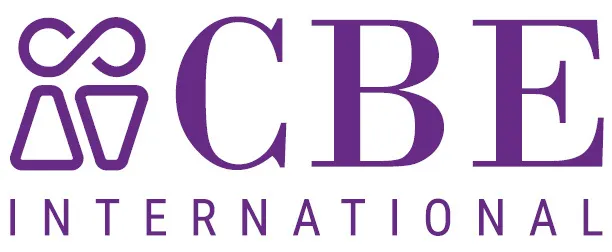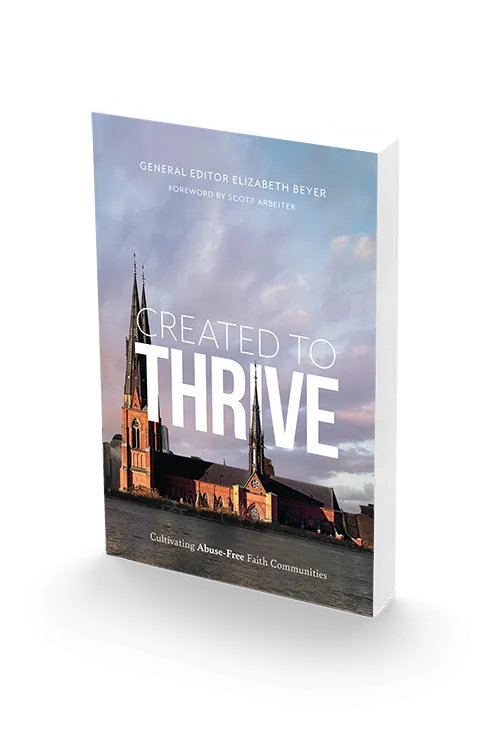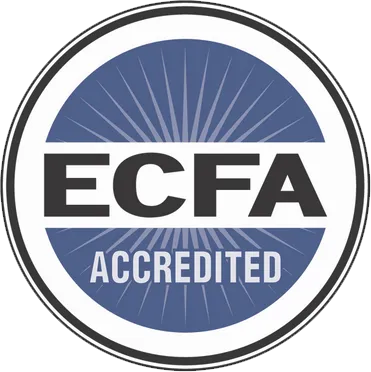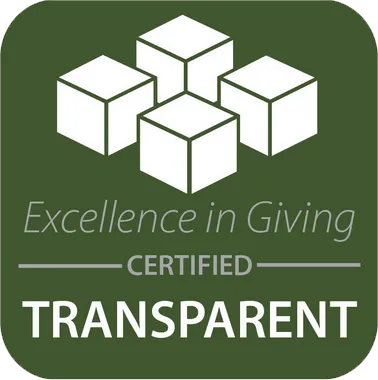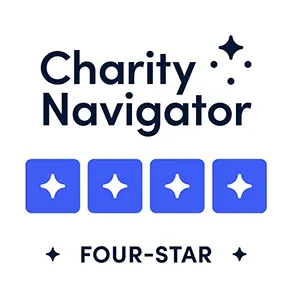Introduction
The book of Ruth is one of my favorites. A literary masterpiece, it offers a rich exploration of God’s providence, a theology of mission, and a case study in a plethora of Christian virtues, including courage, trust, generosity, hospitality, sacrifice, humility, kindness, compassion, friendship, stewardship, purity, perseverance, faith, hope, and love. There is a harvest and thanksgiving theme as well as an eschatological one. It is no accident that observant Jews make the book of Ruth the liturgical centerpiece for the twin feasts of Pentecost and First Fruits (Shavuot).
These themes bear extended examination. For example, as a theology of mission, the story beautifully illustrates the universality of God’s love—a love that readily welcomes all who turn to him. It is a powerful affirmation of adoption and ingrafting as an alien widow joins God’s chosen people and unexpectedly becomes a central character in the their grand story, the great-grandmother of the fabled King David and, more significantly, a channel for the Messiah. Or, again, this little book explores love in all four of its rich dimensions: affection, friendship, romance (Greek eros), and the divinely motivated, sacrificial love we know as charity or agapē.
There are structural felicities as well. For example, the first seventy-one words in Hebrew underscore a setting of extreme distress, while the last seventy-one words of the story underscore relief and hope. One fairly interesting way to read the story is to see it as a call to hope in hard times, with at least six rather surprising reasons for keeping hope alive. I would like to follow this particular thread in some detail as we look at the book of Ruth.
Seven signs of hard times
The context of the book of Ruth would seem to elicit despair rather than hope. Within the opening verses, there are at least seven signs that point to a setting of such difficulty, suffering, and sorrow that a bitter and tragic end to the story seems all but inevitable.
1. We are told that the account occurs during the days when the judges ruled. Those were bad times. Israel was struggling to find a national identity. It was a period of political anarchy, of idolatry and moral degeneration, of repeated conquest and enslavement, of social unrest and civil war. Israel followed a cycle of sin, judgment, repentance, restoration, and then a seemingly inevitable return to wickedness as the downward spiral continued. Even the leaders God raised up to deliver Israel were all too frequently compromised in their personal lives. Gideon set up the golden ephod and apparently fathered numerous children under the shadow of this phallic god; then his son Abimelech slaughtered his seventy brothers in his own quest for power. Jepthah, the son of a prostitute, carried the family legacy of poor, rash decisions to another generation. Samson is an enduring type of the charismatically powerful but sexually careless spiritual leader.1 By the end of Judges, we learn that the priest serving pagan idols is Jonathan, the grandson of Moses, while the prevailing moral degradation, including homosexual lust and murderous rape, rivals that of Sodom and Gomorrah. Even the attempt to alleviate the poisonous effects of the civil war results in permission to capture women forcibly as wives. The era is a nightmare for women.2
The name of Naomi’s husband, Elimelech, meaning God is King, is an ironic reminder of the four times we are told in the book of Judges (17:6, 18:1, 19:1, 21:25) that there is no king in Israel, so that everyone pursued their own ends by their own means.
2. There is a famine in the land. The special irony is that it appears in Bethlehem, which means “house of bread.” Famine is often a sign of God’s judgment in the Hebrew Scriptures, following the warnings given by Moses in Deuteronomy 28 for disobeying God’s covenant, just as a bountiful harvest is a sign of God’s blessing (e.g., Ps. 67). The connection between famine and divine judgment seems likely in Ruth because the famine is not lifted until God intervenes (1:6).
3. The family of Elimelech migrates, one of the more obvious signs of desperation.3 It is particularly telling when we learn that they are Ephrathites, from a line of old wealth. There are several hints of that wealth beyond the family name, including the surprise of Naomi’s friends at her losses, her relation to the wealthy Boaz, and the land she still has a formal right to repurchase and reclaim. Old wealth tends to ride out economic downturns and even profit from them, so that one can find enormously wealthy families in the poorest of countries.4 When an Ephrathite family had to leave Bethlehem, that was a bad sign indeed.
4. Death is our last enemy, and, in many ways, it is the single hardest challenge we face as human beings. Naomi loses her husband and both sons. The loss is catastrophic.
5. Death brings widowhood, a difficult situation in any time or place, but frequently a kind of living death in the Ancient Near East. It is difficult to imagine the loss of place, position, and security that widowhood generally meant.
6. There were no children, no posterity—so there was no hope for the future, for a new generation. We recall the sense of longing and emptiness when Sarah, Rachel, and Hannah were still barren, and we remember the despair of the Shunammite woman before Elisha prayed and her son was restored to life (2 Kgs. 4:8–37).
7. Finally, Ruth has the awkward, difficult, and even dangerous task of survival by gleaning, which combines the backbreaking work of trying to find food in fields that have already been harvested with the humiliation of begging.5
Six sources of hope in hard times
Despite the very difficult circumstances that surround Naomi and Ruth, their story is filled with hope and encouragement for believers who also find themselves in the midst of hard times.
1. We have hope because God knows and cares about our problems. One of the fascinating things about the book of Ruth is that it even exists. It is part of the historical record of the people of Israel. Most histories focus on kings, princes, prime ministers, generals, armies, wars, grand empires, great events, or on matters related to power and privilege. But this is a story about a poor, migrant widow and her alien daughter-in-law, also a widow. They live in a tiny town in a poor country. God knows all about their troubles, and his account of things places a very different emphasis on what is or is not truly important.6 God’s records are not the same as standard histories from a human perspective.
2. We have hope because God sides with the humble.7 In each of Ruth’s four chapters, Ruth’s humility comes to the fore. In chapter 1, she abandons all rights, privileges, possessions, and pride as a Moabite to cast her lot with Naomi in Israel. In fact, her choice is just the opposite of that of her ancestor Lot, whose pursuit of material gain took him away from the people of God.8 It also defies ordinary human migration patterns. People almost inevitably move to more powerful nations or to better economic climates.9 In chapter 2, Ruth voluntarily works as a gleaner, having been reduced to migrant work with the shameful status of begging, picking over a depleted harvest field.10 In chapter 3, Ruth risks rejection and humiliation when she approaches Boaz to ask for his hand in marriage. Even in our modern society, women who consider themselves feminists would not always feel comfortable initiating such a proposal. Remember Ruth’s social status as well. Would a widowed Mexican migrant farm laborer approach landed gentry from New England? In chapter 4, Ruth defers to Naomi, allowing her mother-in-law to take center stage and claim Obed as her own son. There is no turf war between mother-in-law and daughter-in-law. Ruth is both poor in spirit and meek, and she gains both God’s kingdom and material blessing in this life.
3. We have hope because God blesses those who trust him. His love extends to all who do so, regardless of background or circumstances. Ruth’s trust is eloquently stated in her famous declaration of loyalty to Naomi:
But Ruth replied, “Don’t urge me to leave you or to turn back from you. Where you go I will go, and where you stay I will stay. Your people will be my people and your God my God. Where you die, I will die, and there I will be buried. May the Lord deal with me, be it ever so severely, if even death separates you and me.” (1:16–17 TNIV)
Boaz reiterates Ruth’s remarkable pledge in chapter 2, underscoring the trust and commitment she had demonstrated in making it. The narrative thereby stresses the spiritual significance of her sacrificial choice.
Boaz replied, “I’ve been told all about what you have done for your mother-in-law since the death of your husband—how you left your father and mother and your homeland and came to live with a people you did not know before. May the Lord repay you for what you have done. May you be richly rewarded by the Lord, the God of Israel, under whose wings you have come to take refuge.” (2:11–12)
Ruth had made an unconditional pledge with no particular hope of blessing or reward, foreshadowing the unflinching stand by Shadrach, Meshach, and Abednego many years later, who also committed themselves to God regardless of the consequences (Dan. 3:18). In so doing, Ruth too becomes a migrant, but in the wrong direction from a political or economic point of view. Who migrates to Haiti? Nevertheless, God honored Ruth by blessing her with food, provisions, marriage, reclaimed property, a son, the restoration of joy to Naomi, and a special place in the royal line of Israel.
4. We have hope because God honors human initiative. We are made in God’s image, and God expects us to use our talents and the gift of free will to do what we can.11 The doctrine of divine providence should never lead us to passive fatalism. There is an extraordinary series of human initiatives in the book of Ruth. The family goes to Moab to flee the famine.12 Then Ruth returns with Naomi. Next, Ruth undertakes the difficult task of gleaning. Boaz in turn favors Ruth. Ruth then dares to approach Boaz about marriage. Boaz goes to court (the city gate) and settles with the kinsman-redeemer, which clears the way for marriage to Ruth.
Just as God will multiply a boy’s loaves and fishes, so God takes each of these actions and magnifies their effects. We were made for good works, even if our good works can never bring us salvation. While our hope is never in our own efforts, God in his mercy gladly receives what we can humbly offer and transforms our initiatives far beyond what we could ever achieve on our own.
5. We have hope because God provides for our needs through his people. We are part of his community. The book of Ruth gives us a marvelous series of examples, showing us how we are all dependent upon each other in multiple ways. Ruth supported her mother-in-law with her loyal love and her hard work, becoming in the process an archetype of sacrificial loyalty. Ruth also surprised Boaz with her unexpected love and gave him a son. Naomi led Ruth to the living God of Israel. She gave her son as a husband to Ruth and then led Ruth to another husband. Naomi also provided Boaz with a wife, a son, and her ancestral land.
Boaz gave Ruth many favors when she came to glean in his fields. He blessed her along with others, “The Lord be with you.” He told her to stay on his land and to keep with the women, ordering the men not to touch her. He provided water for her. He commended her for her loyal love to Naomi and prayed a special blessing upon her. He invited her to join in and share the special harvest meal. He told his men to overlook any errors on Ruth’s part and to leave extra grain for her. In addition to recognizing Ruth’s right to glean and welcoming her to do so, Boaz accepted her approach to him at night, protected her, and pursued the opportunity Ruth presented to seek her hand and reclaim Naomi’s family property, joyfully becoming Ruth’s kinsman-redeemer. Finally, Boaz married Ruth and gave Ruth and Naomi a son, Obed. What a marvelous narrative illustrating and highlighting the interdependence of the people of God.
6. We have hope because holiness brings hope. Ruth is a wonderful example of the fact that it is possible to be holy in hard times. The great temptation in hard times is to be less than holy to survive, to somehow cheat God, others, or ourselves in order to get by. Ruth reminds us that moral compromise is never necessary and that commitment to moral purity is itself an unexpected source of hope. This theme has an interesting echo in the New Testament, especially in Paul’s writings. The three great theological virtues of faith, hope, and love appear together at least nine times in the New Testament.13 But the Apostle Paul can substitute holiness for hope (1 Tim. 2:15b, cf. Gal. 5:5–6), implying that the two are so closely related as to be interchangeable. There seems to be a symbiotic relationship between them, for, while the hope of the second coming should motivate us to purity, godliness is in itself a source of hope.
Nothing brings out this link between holiness and hope so clearly and forcefully as the strange blessing of the elders at the gate in Ruth 4:11–12, a blessing that implies a subtle series of analogies and disanalogies. Ruth is to be to Boaz like Rachel and Leah, who built up the house of Israel—that is, the house of Jacob:
Then the elders and all the people at the gate said, “We are witnesses. May the Lord make the woman who is coming into your home like Rachel and Leah, who together built up the house of Israel. May you have standing in Ephrathah and be famous in Bethlehem. Through the offspring the Lord gives you by this young woman, may your family be like that of Perez, whom Tamar bore to Judah.
This first half of the blessing recalls Genesis 25–36. Rachel, Leah, and their two servants have twelve sons, who are the sources of the twelve tribes of Israel. Ruth has one son, Obed, which means servant. When one follows the family line from Obed to David to Jesus, Obed becomes a source for the new Israel, one who is the Messiah and the Suffering Servant promised by the prophets.
Like Jacob, Boaz treasured what someone closer in line despised. Esau is like the unnamed but rightful kinsman-redeemer who wanted to buy Naomi’s property back, but did not do so because it meant taking Ruth. But Boaz rightly saw that Ruth was the real treasure and received Naomi’s land too, just as Jacob acquired both Esau’s birthright and Isaac’s special blessing.
Both stories, of Jacob and Rachel and of Ruth and Boaz, are love stories. Nevertheless, unlike Jacob, Boaz did not manipulate or deceive, but was honest and open, kind and just. His righteous means matched his noble ends. Thus, the story of Ruth and Boaz illustrates the fact that hard times do not require guile or dishonesty.14
The second half of the blessing is, if anything, even more enigmatic and baroque. The family and offspring of Boaz and Ruth are to be like Perez (cf. his twin Zerah), born to the incestuous relationship of Tamar and Judah. Recall the bizarre story in Genesis 38 involving Judah, his wife, who is the daughter of the Canaanite Shua and dies mid-narrative, their three sons, Er, Onan, and Shelah, and, finally, the widower Judah and Er’s widowed wife Tamar. There is also an odd link between the stories of Jacob and Esau and Perez and Zerah, since both sets of twins involve a struggle between siblings. So what are the analogies and disanalogies in this second part of the blessing?
The union of Ruth and Boaz is completely unexpected, like the union of Tamar and Judah. Both involve foreign women, both come after the sorrow and loss of spouses and children, and both involve a legal relative. Both stories are implicitly set against a background of Leverite marriage commands and kinsman-redeemer principles.
Perez and his descendents inherited much land, including the area around Bethlehem. So too will Boaz and Ruth and their heirs. Nevertheless, unlike Judah and Tamar, the relationship of Boaz and Ruth is neither incestuous nor immoral. Guess who finds true love and joy?15 Thus, the story of Ruth and Boaz illustrates the fact that hard times never require sexual license in our quest for personal meaning and fulfillment.
So, we have hope in hard times for many reasons. God knows and cares about our problems. God sides with the humble. God blesses those who trust him. God honors our initiatives and multiplies their impact for good beyond all hope. God provides for his people through his people. And godly holiness brings hope.16 Ruth and Boaz remind us that this is all really true. They are historical examples of the way God works in our lives to transform us and make us holy symbols of hope and encouragement to others.
Originally presented at the symposium “Christians in the Public Square,” Evangelical Theological Society, 58th annual meeting, Washington, D.C., November 2006.
Notes
- The recent headlines about the fall of Ted Haggard, president of the National Association of Evangelicals and pastor of New Life Church, Colorado Springs, Colo., are an all too familiar refrain in the evangelical world. See also the film The Apostle (1997), written, directed, and financed by Robert Duvall, who also plays the lead character, Sonny, i.e., the Apostle; and John Salveson, “I Was Abused . . . and 25 Years Later I’m Still Trying to Make Things Right,” Notre Dame Magazine, 32, no. 2 (Summer 2003): 24–29, one of the most moving pieces to date about the personal impact of predatory Roman Catholic priests.
- Cf. Phyllis Trible, Texts of Terror: Literary-Feminist Readings of Biblical Narratives, Overtures to Biblical Theology, no. 13 (Philadelphia, Pa.: Fortress, 1984).
- This is a particularly powerful sign to one who has lived overseas in settings where massive migration is a sad but overwhelming fact of life.
- Numerous examples from my own experiences in Ecuador, Jamaica, and Haiti come readily to mind.
- For many cultures, manual labor is a fate worse than begging, since, in those settings, manual labor carries so many negative connotations: slavery, poverty, uneducated illiteracy, oppressive economic exploitation, shattering physical impairment, alienation as an untouchable outcaste, or the like. In other societies, nothing could be worse than living on welfare or outright begging. But, in some respects, gleaning manages to combine both of these dreaded conditions: unspeakably hard manual labor with dependence on another’s charity.
- Cf. Matt. 6:25–34.
- Cf. Matt. 5:3–5.
- According to Gen. 19:37, the Moabites descend from Lot and his older daughter.
- E.g., Jamaicans migrate to Canada, Great Britain, or the United States. They do not move to Haiti or even to Guyana in search of a better life.
- See n. 8 above.
- Matt. 25:14–30, Luke 19:12–27. In my personal opinion, one of the great evils of teaching women their supposed “roles” is that such prescriptions frequently require them to violate this very strong dominical teaching and bury their talents unnecessarily. Cf. Timothy Paul Erdel, “Buried Treasure,” speech given at the Bethel College Junior-Senior Banquet, Windsor Conference Center, Mishawaka, Indiana, 19 March 2005.
- This particular point is controversial, as some commentators see it negatively, but cf. 2 Kgs. 8:1–2, among other examples, where Elisha instructs the Shunammite woman to escape the famine by going to the Philistines.
- 1 Cor. 13:13; 1 Thess. 1:3, 5:8; Rom. 5:2–5; Col. 1:4–5; Heb. 6:10–12, 10:22–24; 1 Pet. 1:3–8, 21–22.
- Cf. Nathanael in John 1:48, whose honesty and integrity is contrasted with the character of Jacob.
- Some have argued that the references to feet in Ruth ch. 3, especially when Ruth uncovers the feet of Boaz, are really standard Hebrew euphemisms for exposing the genitals, so that the references to feet clearly signal sexual play. Therefore, the relationship between Ruth and Boaz is sexually tainted from the perspective of a traditional understanding of biblical morality. I do not deny that references to feet are sometimes euphemisms for genitals in Hebrew, but I would suggest several reasons for thinking otherwise, including both the emphasis on the virtuous characters of Ruth and Boaz in every other aspect of the story and the care Boaz twice takes to preserve Ruth’s reputation (in ch. 2 and again in ch. 3). Nevertheless, one of the more interesting arguments in favor of the purity of Ruth and Boaz is this exquisitely balanced series of analogies and disanalogies implicit in the blessing of the elders.
- Holiness brings hope. As a personal aside, as one from the Missionary Church, I sometimes almost despair when I think about how much has been lost of the original potential inherent in the synthesis of the Anabaptist/Pietist and Wesleyan/Keswickian-holiness traditions. Then I remember the story of Ruth and how her witness to the love of God kept alive the hope for God’s kingdom in the midst of a dissolute and chaotic era. I trust that, however few they may be, there will always be witnesses to the rich possibilities latent within the Anabaptist/Holiness synthesis. Cf. Timothy Paul Erdel, “Holiness among the Mennonites,” Reflections 10, nos. 1–2 (Spring and Fall 2008): 5–42.
